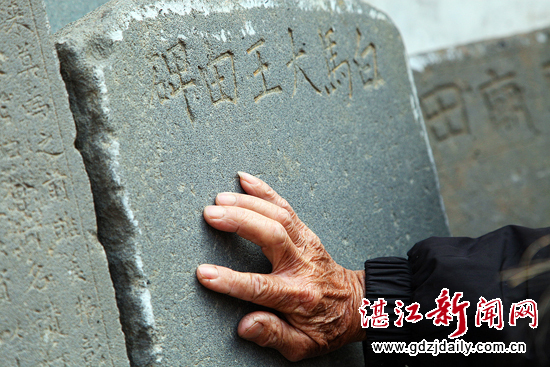Home> News
3 historical remains in Zhanjiang designated as provincial cultural relics

A stone tablet in Linggang Temple of Dianqian village, Leizhou, Zhanjiang. [Photo by Zhang Fengfeng/gdzjdaily.com.cn]
Stone tablets in Linggang Temple, Xiting Quay, and Baima Temple in Dianqian village, Leizhou, Zhanjiang, have been selected as provincial cultural relics sites of Guangdong province and also been included in sites of the Maritime Silk Road application for World Heritage.
Four stone tablets in Linggang Temple, date back to the Qing dynasty (1644-1911) and recorded the sacrificial culture, temple management, and ancient customs of its time. Xiting Quay was an important quay for cargo transport in the Song (960-1279) and Yuan (1271-1368) dynasties. The stone tablets in Baima Temple recorded the construction, renovation, and traffic history of Xiting Quay.

Xiting Quay of Dianqian village, Leizhou, Zhanjiang. [Photo/Zhanjiang Evening]
These three historical remains are classified as ancient architectural relics with great historical, scientific, and artistic value on research of the Maritime Silk Road and the South China Historical Trail.
In recent years, the Leizhou and Zhanjiang governments have put great efforts in protecting cultural relics in Dianqian village, including renovation, maintenance, and reconstruction. In the future, the village will increase the protection of cultural relics and environmental features, as well as carry out various forms of publicity and education activities to strengthen people's understanding of cultural heritages.

 Print
Print Mail
Mail 5G construction supports Zhanjiang's high-quality development
5G construction supports Zhanjiang's high-quality development Acting mayor inspects project construction in Xuwen, Leizhou
Acting mayor inspects project construction in Xuwen, Leizhou Zhanjiang island an "egret paradise"
Zhanjiang island an "egret paradise"  Dancing egrets add vitality to Xiashan
Dancing egrets add vitality to Xiashan